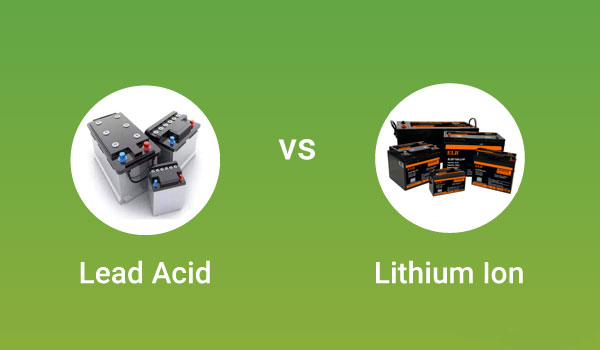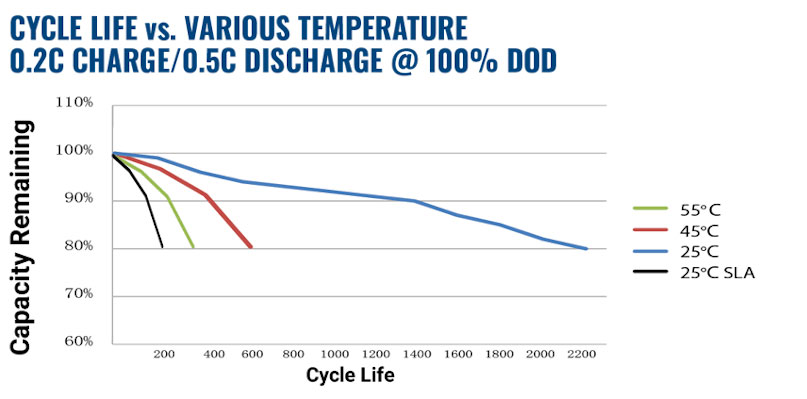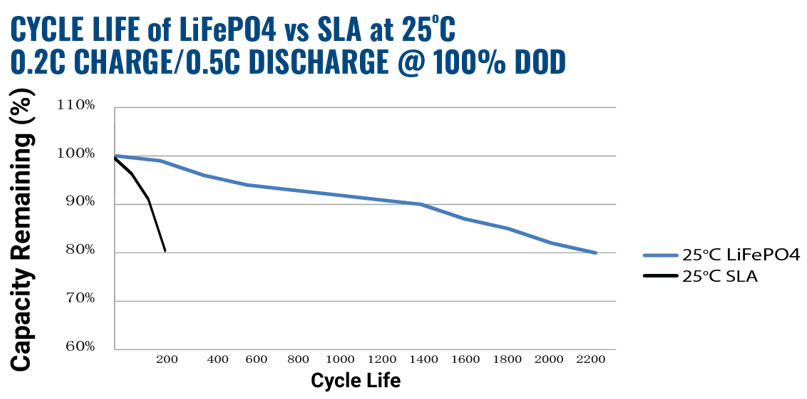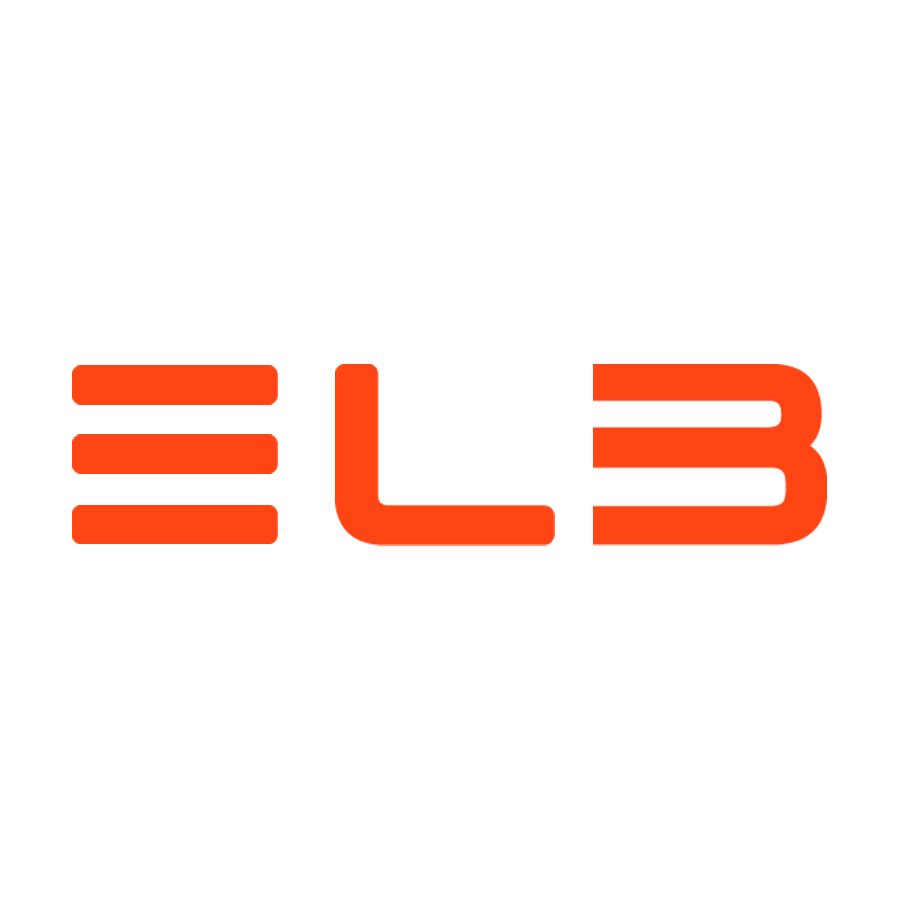BLOG
The reason why we need upgrade the lead acid to lithium?
Battery storage is becoming an increasingly popular addition to solar energy systems. Two of the most common battery chemistry types are lithium-ion and lead acid. More and more people plan to upgrade lead acid to lithium battery. As their names imply, lithium ion batteries are made with the lithium ion, while lead-acid batteries are made with lead.
With these differences in chemistry come differences in performance and cost. While both lithium-ion and lead acid battery options can be effective storage solutions, to know the reason why we need upgrade thelead acid battery to lithium battery,let’s compare the difference between them both.

1.Cost
The one category in which lead acid batteries seemingly outperform lithium-ion options is in their cost. A lead acid battery system may cost hundreds or thousands of dollars less than a similarly-sized lithium-ion setup – lithium-ion batteries currently cost anywhere from $5,000 to $15,000 including installation, and this range can go higher or lower depending on the size of system you need.
While lead acid batteries typically have lower purchase and installation costs compared to lithium-ion options, the lifetime value of a lithium-ion battery evens the scales. Below, we’ll outline other important features of each battery type to consider, and explain why these factors contribute to an overall higher value for lithium-ion battery systems.
2.Capacity
A battery’s capacity is a measure of how much energy can be stored (and eventually discharged) by the battery. While capacity numbers vary between battery models and manufacturers, lithium-ion battery technology has been well-proven to have a significantly higher energy density than lead acid batteries. This means that more energy can be stored in a lithium-ion battery using the same physical space. Because you can store more energy with lithium-ion technology, you can discharge more energy, thus power more appliances for longer periods of time.
3.Weight
Lithium, on average, is 55% lighter than SLA. In cycling applications, this is especially important when the battery is being installed in a mobile application, such as golf carts, scooter,etc,or where weight may impact the performance.
4.Depth of discharge
A battery’s depth of discharge is the percentage of the battery that can be safely drained of energy without damaging the battery. While it is normal to use 85 percent or more of a lithium-ion battery’s total capacity in a single cycle, lead acid batteries should not be discharged past roughly 50 percent, as doing so negatively impacts the lifetime of the battery. The superior depth of discharge possible with lithium-ion technology means that lithium-ion batteries have an even higher effective capacity than lead acid options, especially considering the higher energy density in lithium-ion technology mentioned above.
5.Efficiency
Just like solar panel efficiency, battery efficiency is an important metric to consider when comparing different options. Most lithium-ion batteries are 95 percent efficient or more, meaning that 95 percent or more of the energy stored in a lithium-ion battery is actually able to be used. Conversely, lead acid batteries see efficiencies closer to 80 to 85 percent. Higher efficiency batteries charge faster, and similarly to the depth of discharge, improved efficiency means a higher effective battery capacity.
6.High temperature performance
Lithium’s performance is far superior than SLA in high temperature applications. In fact, lithium at 55 degree still have twice the cycle life as SLA does at room temperature.Lithium will outperform lead under most conditions but is especially strong at elevated temperatures.

7.Charge time
Charging SLA batteries is notoriously slow. In most cyclic applications, you need to have extra SLA batteries available so you can still use your application while the other battery is charging. In standby application,an SLA battery must be kept on a float charge.
With lithium batteries,charging is 4~5 times than SLA.The faster charging means there is more time the battery is in use, and therefore requires less batteries. As a bonus, there is no need to keep lithium on a float charge for storage.
8.Lifespan
Batteries are also similar to solar panels in that they degrade over time and become less effective as they age. Discharging a battery to power your home or appliances and then recharging it with solar energy or the grid counts as one “cycle”. The numbers vary from study to study, but lithium-ion batteries generally last for several times the number of cycles as lead acid batteries, leading to a longer effective lifespan for lithium-ion products. Lithium battery have ten times the cycle life of SLA under most conditions,this brings the cost per cycle of lithium lower than SLA,which meaning you will have to replace a lithium battery less ofen than SLA.

Why should you use lead acid battery instead lithium-ion battery?
If you need a battery backup system, both lead acid and lithium-ion batteries can be effective options. However, it’s usually the right decision to install a lithium-ion battery given the many advantages of the technology – longer lifetime, higher efficiencies, and higher energy density. Despite having higher upfront costs, lithium-ion batteries are usually more valuable than lead-acid options.
Want to produce customized lithium battery according to special requirement, welcome to consult ELB team to get more details.
THE ELB BRAND PROMISE

QUALITY
4000 TIMES CYCLES 10 YEARS DESIGN LIFESPAN

CERTIFICATION
ISO9001:2015,ISO14001:2015,OHSAS18001:2007 CE, CB, UL, KC, FCC, BIS, IEC62133.

SERVICES
EXW, FOB, DAP, DDP OPTIONAL
T/T, L/C OPTIONAL


